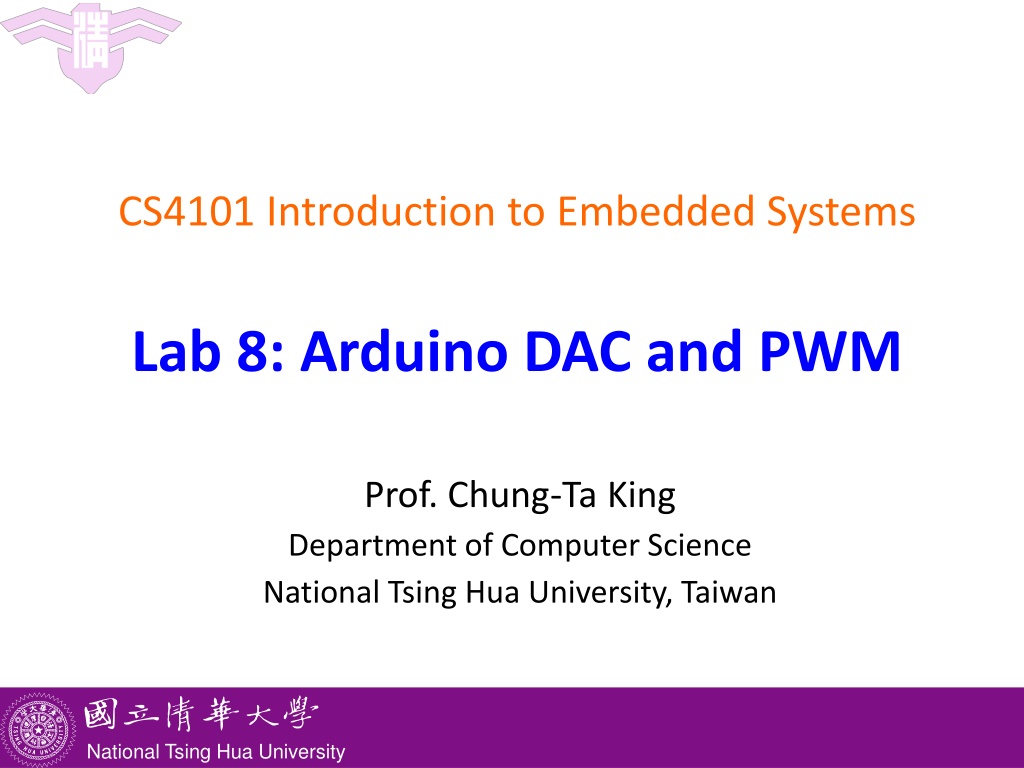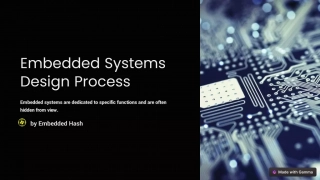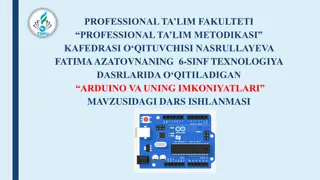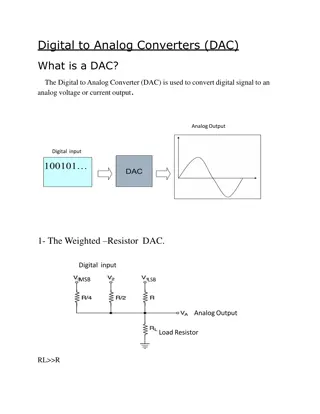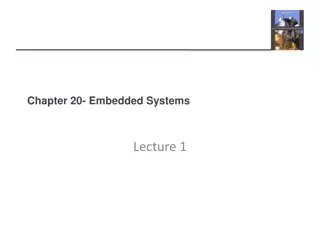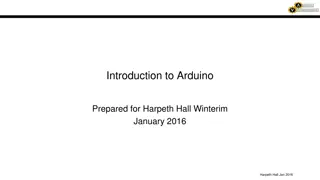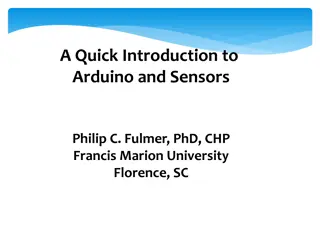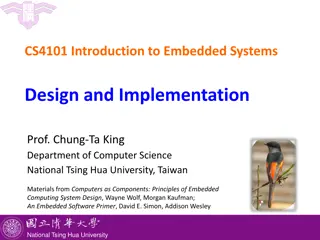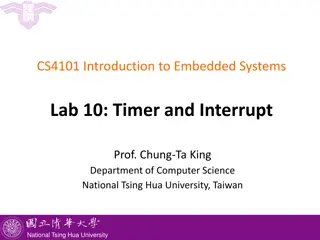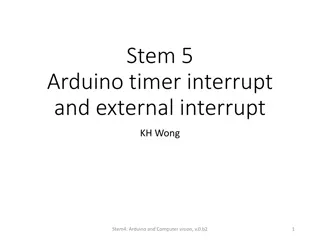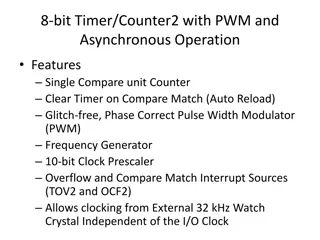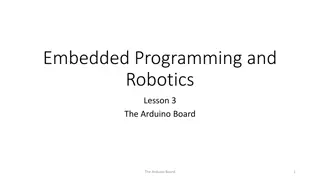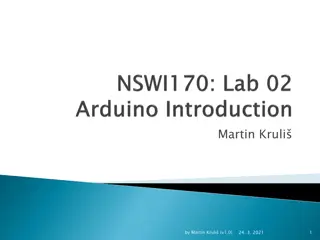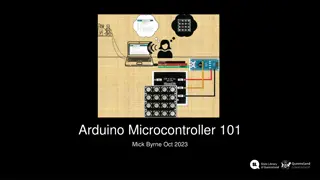Introduction to Arduino DAC and PWM in Embedded Systems Lab
Explore the practical application of Arduino's digital-to-analog converter (DAC) and pulse width modulation (PWM) techniques through projects involving RGB LED modules, analog joysticks, and stepper motors. Learn to control RGB LED colors, read analog joystick input values, and operate stepper motors with the 28BYJ-48 model. This lab tutorial from National Tsing Hua University, Taiwan, provides sample code snippets and guidance on connecting components to Arduino Uno boards. Delve into embedded systems and hands-on projects with this informative resource in the field of embedded systems.
Download Presentation

Please find below an Image/Link to download the presentation.
The content on the website is provided AS IS for your information and personal use only. It may not be sold, licensed, or shared on other websites without obtaining consent from the author. Download presentation by click this link. If you encounter any issues during the download, it is possible that the publisher has removed the file from their server.
E N D
Presentation Transcript
CS4101 Introduction to Embedded Systems Lab 8: Arduino DAC and PWM Prof. Chung-Ta King Department of Computer Science National Tsing Hua University, Taiwan National Tsing Hua University
RGB LED Module Connect to PWM pins (pins with a ~ notation) Since the RGB mini board already contains built-in resistors, you can connect to Arduino Uno directly. 1 National Tsing Hua University
Sample Code for RGB LED int redPin = 11, greenPin = 10, bluePin = 9; void setup() { pinMode(redPin, OUTPUT); pinMode(greenPin, OUTPUT); pinMode(bluePin, OUTPUT); } void loop() { analogWrite(redPin, 50); analogWrite(greenPin, 100); analogWrite(bluePin, 150); delay(1000); analogWrite(redPin, 0); analogWrite(greenPin, 0); analogWrite(bluePin, 0); delay(1000); } Duty cycle: 0~255 2 National Tsing Hua University
Analog Joystick 3 National Tsing Hua University
Sample Code for Analog Joystick int button = 2; int xAxis = A0, yAxis = A1; void setup() { Serial.begin(9600); pinMode(button, INPUT_PULLUP); // LOW when pressed } void loop() { int xVal = analogRead(xAxis); int yVal = analogRead(yAxis); int isPress = digitalRead(button); Serial.print("X="); Serial.print(xVal); Serial.print("Y="); Serial.print(yVal); if( isPress == 0) Serial.print("Button is pressed."); else Serial.print("Button is not pressed."); delay(200); } 4 National Tsing Hua University
Stepper Motor: 28BYJ-48 Number of phases: 4 Step angle: 8-step sequence: 5.625 (64 steps per revolution) 4-step sequence: 11.25 (32 steps per revolution) Gear reduction ratio: 1/64 32*64 = 2048 steps per revolution in 4-step sequence NOTE: Arduino "Stepper Library" runs in 4-step mode 5 National Tsing Hua University
Stepper Motor Driver 5V GND Choose 4 pins as input 6 National Tsing Hua University
Sample Code for Stepper Motor #include <Stepper.h> #define STEPS 2048 // for 28BYJ-48 // create an instance of the stepper class Stepper stepper(STEPS, 8, 9, 10, 11); int previous = 0; // previous reading from analog IN void setup() { stepper.setSpeed(5); // set the speed to 5 RPMs } void loop() { int val = analogRead(A0); // get the sensor value // move # of steps equal to change in sensor reading stepper.step(val - previous); // remember the previous value of the sensor previous = val; } 7 National Tsing Hua University
Basic 1 Use the analog joystick to control the RGB LED through PWM. Turn the analog joystick and change the light intensity of red and blue LEDs as follows: When the joystick moves down, red LED will be the brightest. When the joystick is up, turn off red LED. When the joystick moves left, blue LED will be the brightest. When the joystick is at the right end, turn off the blue LED. While the joystick is pressed, send 0 V to green pin. Otherwise, send 3 V to green pin. 8 National Tsing Hua University
Basic 2 Glue an arrow shaped paper on a stick and put them on the axis of the stepper motor. Move the arrow corresponding to the input from the analog joystick. If you can only control 4 directions, you will get 70% of the score. 9 National Tsing Hua University
